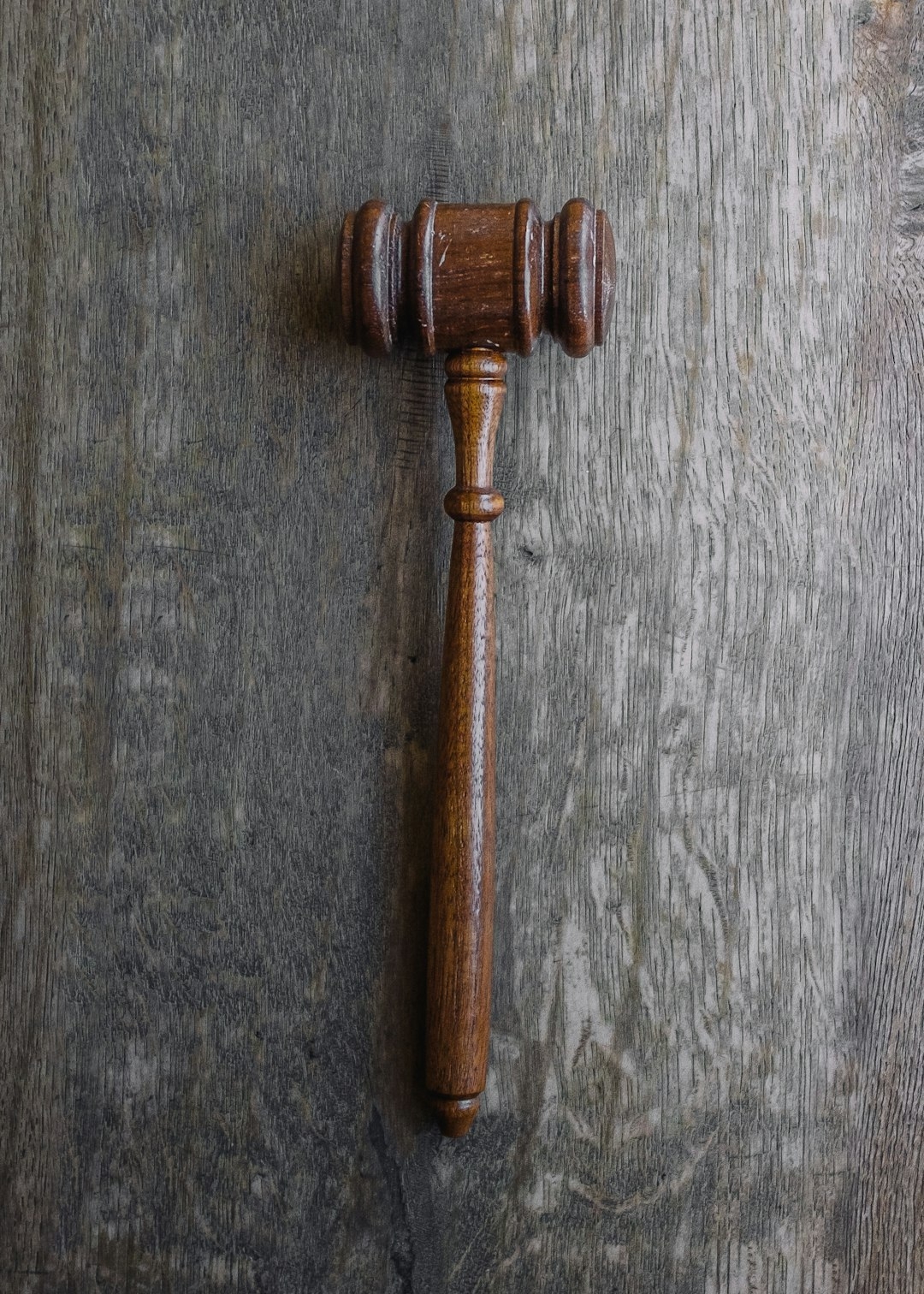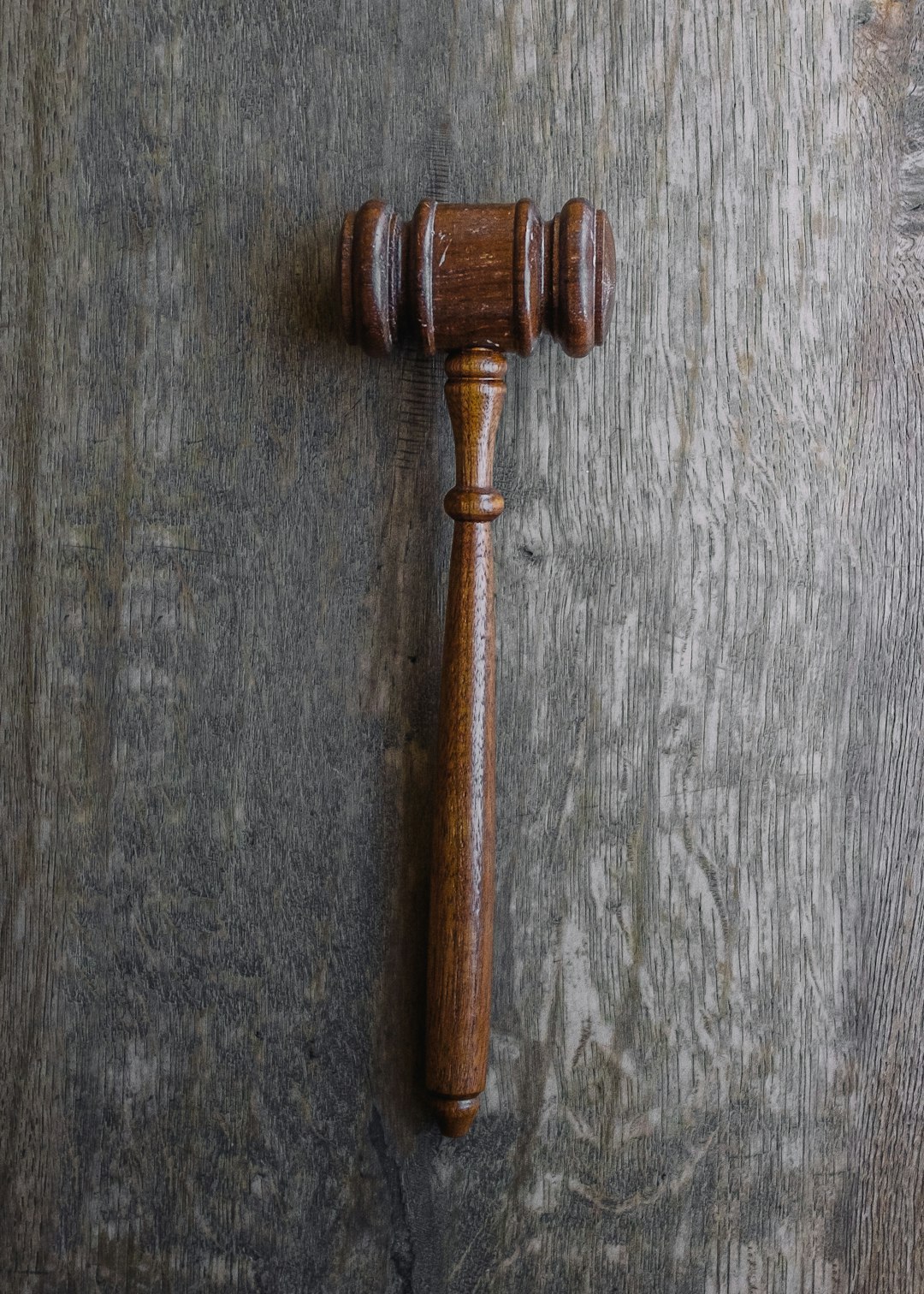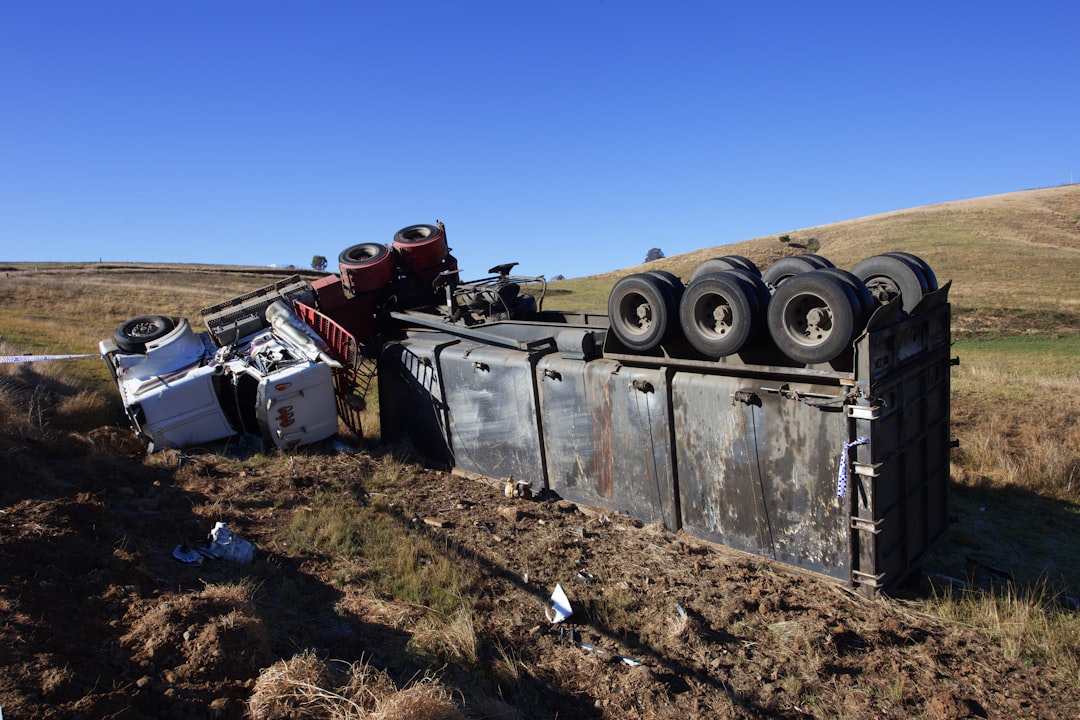

Hospital-acquired infections (HAIs) are a significant concern in the healthcare industry, posing serious challenges for both medical professionals and patients. These infections, also known as nosocomial infections, occur within a hospital setting and are not present at the time of a patient's admission. Understanding the causes and types of HAIs is crucial, especially when considering the role of medical malpractice lawyers in these cases.
The causes of HAIs are multifaceted. One primary cause is the invasive procedures that patients often undergo during their hospital stay. Surgical interventions, catheter insertions, and intravenous lines all provide potential entry points for pathogens. Additionally, hospitals house individuals with weakened immune systems, making them more susceptible to infections. The high patient turnover and close quarters further facilitate the spread of infectious agents.
Another critical factor contributing to HAIs is inadequate hygiene practices among healthcare workers. This includes improper handwashing techniques or failure to adhere to sterilization protocols for medical instruments. Environmental factors such as contaminated surfaces or poor ventilation systems can also play a role in spreading infections within hospital settings.
There are several types of HAIs that medical malpractice lawyers frequently encounter in their cases. One common type is bloodstream infections (BSIs), often associated with central line catheters. These infections can lead to severe complications like sepsis if not promptly treated. medical malpractice lawyer Washington . Another prevalent HAI is surgical site infections (SSIs), which occur at or near surgical incisions and can cause prolonged hospital stays, additional surgeries, or even death.
Urinary tract infections (UTIs) related to catheter use are another frequent issue faced by hospitalized patients. Ventilator-associated pneumonia (VAP) rounds out the list as a significant HAI concern, particularly affecting patients who require mechanical ventilation for extended periods.
Medical malpractice lawyers specializing in cases involving HAIs must navigate complex legal terrain while advocating for their clients' rights and seeking justice for harm caused by negligent actions within healthcare facilities. These attorneys need an in-depth understanding of both medical terminology and legal principles surrounding negligence claims related to hospital-acquired infections.
To build strong cases on behalf of their clients, malpractice lawyers gather extensive evidence demonstrating how deviations from standard care protocols directly contributed to acquiring an infection during hospitalization.. They may consult with expert witnesses such as infectious disease specialists who can testify about breaches in proper hygiene practices or lapses in infection prevention measures implemented by hospitals
In conclusion , comprehending different types Of Hospital Acquired Infections along With Their Causes Is Essential For Medical Malpractice Lawyers Handling Such Cases . By Delving Into The Intricacies Of Nosocomial Infections And Establishing Clear Links Between Negligence And Harm Suffered By Patients , These Attorneys Play A Vital Role In Ensuring Accountability Within Healthcare Systems While Seeking Justice For Those Affected By Preventable Medical Errors .
Lawyer for medical malpractice involving emergency room mistakes
In the complex and often emotionally charged realm of medical malpractice, few scenarios stir greater concern than hospital-acquired infections (HAIs). These infections, which patients contract during their stay in a healthcare facility, can lead to severe complications, prolonged hospital stays, and even death. When such infections occur due to the negligence of healthcare providers or institutions, they form legal grounds for medical malpractice claims. Addressing these cases requires not only a deep understanding of medical law but also an empathetic approach to the individuals affected.
Hospital-acquired infections are preventable conditions that arise when hospitals fail to maintain adequate hygiene standards or do not follow proper protocols for patient care. Common examples include Methicillin-resistant Staphylococcus aureus (MRSA), Clostridium difficile (C. diff), and surgical site infections. The legal basis for a medical malpractice claim in these instances hinges on proving four critical elements: duty, breach, causation, and damages.
Firstly, it must be established that the healthcare provider or institution owed a duty of care to the patient. This is typically straightforward as hospitals and medical staff are inherently responsible for the well-being of their patients. The second element involves demonstrating that this duty was breached through actions that deviated from accepted medical standards. For instance, if a hospital fails to sterilize surgical instruments properly or neglects basic hand-washing protocols among staff members, these lapses can be seen as breaches of duty.
The third element-causation-requires showing a direct link between the breach of duty and the infection suffered by the patient. This often necessitates expert testimony from medical professionals who can attest that the infection would not have occurred if proper procedures had been followed. Finally, it must be proven that actual damages resulted from this breach; this includes physical suffering, additional medical expenses incurred due to prolonged treatment, lost wages from extended recovery periods, and emotional distress.
Medical malpractice lawyers specializing in HAIs play a pivotal role in navigating these intricate cases. They gather comprehensive evidence including medical records, witness statements, and expert opinions to build a compelling case for their clients. Their expertise helps in identifying instances where hospitals failed in their obligations-be it through inadequate staffing levels leading to overworked nurses making mistakes or poor maintenance of sterilization equipment.
Moreover, seasoned attorneys understand that beyond financial compensation lies the need for systemic change within healthcare facilities. Successful litigation not only provides relief to affected individuals but also pressures hospitals to adopt stricter infection control measures-thereby safeguarding future patients.
In addition to their technical proficiency, effective malpractice lawyers exhibit empathy towards victims who endure significant physical pain and emotional turmoil due to HAIs. They offer compassionate guidance throughout the legal process while vigorously advocating for justice on behalf of their clients.
In conclusion, hospital-acquired infections represent serious lapses in patient care with profound implications for those affected. Legal grounds for medical malpractice in these cases rest on clearly establishing duty breaches that directly cause harm resulting in tangible damages. Medical malpractice lawyers are essential allies for victims seeking redressal; they combine legal acumen with compassion-driven advocacy aimed at both compensating individuals and catalyzing improvements in healthcare practices.
Finding the best medical malpractice lawyer near you can be a daunting task, but it’s an essential one if you seek justice and fair compensation for any harm you've suffered.. The process involves several crucial steps: conducting thorough research, consulting with multiple professionals, and ultimately trusting your instincts. First and foremost, start with comprehensive research.

Posted by on 2024-09-17
When you're confronted with the intricacies of a medical malpractice case, securing qualified legal representation is essential to navigating the complex legal landscape effectively.. Medical malpractice is an area of law that demands specialized knowledge and experience due to its nuanced nature.

Posted by on 2024-09-17
When considering the cost of hiring a medical malpractice lawyer, it's crucial to understand the different payment models that attorneys may use.. Each model has its own set of advantages and disadvantages, and choosing the right one can significantly impact both your finances and the outcome of your case. One common payment model is the Contingency Fee arrangement.

Posted by on 2024-09-17
When faced with the unsettling suspicion of medical malpractice, it’s natural to be overwhelmed by a swirl of emotions and questions.. One of the most pressing concerns is what steps to take next: should you consider settlement options or prepare to go to trial?

Posted by on 2024-09-17
Navigating the complex landscape of medical malpractice can be daunting, especially if you're considering going it alone without the aid of a lawyer.. The good news is that there are numerous resources available to help you represent yourself effectively in these cases.

Posted by on 2024-09-17
Hospital-acquired infections (HAIs) are a serious concern in healthcare settings, affecting millions of patients worldwide each year. These infections can lead to severe health complications, prolonged hospital stays, and even death. When such infections occur due to negligence or substandard care, the role of a medical malpractice lawyer becomes crucial in investigating and seeking justice for affected patients.
A medical malpractice lawyer specializing in HAIs plays a multifaceted role that begins with an in-depth investigation. The process starts by gathering comprehensive medical records of the patient, which includes chart notes, test results, and treatment plans. These documents are essential to understand the timeline and context of the infection's onset. The lawyer will scrutinize these records to identify any deviations from standard medical practices that could have contributed to the infection.
One critical aspect of this investigation involves consulting with medical experts. These professionals help determine whether the care provided met accepted medical standards or if there was negligence involved. For example, they might assess whether hospital staff adhered to proper sterilization protocols or if there were lapses in monitoring and treating the patient's condition promptly.
Another significant responsibility is interviewing witnesses. This may include hospital staff members who were directly involved in the patient's care, as well as other patients who may have experienced similar issues within the same facility. These interviews can provide valuable insights into systemic problems within the hospital environment that go beyond individual cases.
Furthermore, a malpractice lawyer must be adept at navigating complex legal landscapes. This involves understanding state-specific laws governing medical malpractice claims and staying abreast of changes in healthcare regulations that could impact their case. They must also be skilled negotiators capable of engaging with insurance companies and opposing legal teams to secure fair settlements for their clients.
In many instances, these cases do not settle out of court and proceed to trial. Here, the lawyer's role shifts towards building a compelling case for litigation. This includes preparing legal documents such as complaints and motions, presenting evidence clearly and convincingly before a judge or jury, and cross-examining witnesses effectively.
Throughout this process, maintaining open communication with clients is paramount. A seasoned medical malpractice lawyer ensures that patients are well-informed about their case's progress and potential outcomes while providing emotional support during what is often a distressing time.
Ultimately, the goal of a medical malpractice lawyer in HAI cases is twofold: securing compensation for victims' suffering and driving systemic change within healthcare institutions to prevent future occurrences. By holding hospitals accountable for lapses in care that lead to infections, these lawyers play an essential role in promoting higher standards of patient safety across the industry.
In conclusion, investigating hospital-acquired infection cases requires a diligent and multifaceted approach by medical malpractice lawyers. Their work not only seeks justice for those harmed but also reinforces accountability within healthcare systems-a mission critical to safeguarding public health.

Proving Negligence and Establishing Liability in Hospital Settings: Medical Malpractice Lawyer for Cases of Hospital-Acquired Infections
Hospital-acquired infections (HAIs) are a significant concern in healthcare settings, posing severe risks to patients who are already vulnerable. When such infections occur due to negligence, it becomes imperative to address the issue legally. This is where a medical malpractice lawyer steps in, playing a crucial role in proving negligence and establishing liability.
Negligence in hospital settings can manifest in various ways-unsanitary conditions, improper sterilization of medical instruments, inadequate staffing, or failure to follow established infection control protocols. To prove negligence, medical malpractice lawyers must demonstrate that the hospital failed to meet the standard of care that any reasonable institution would uphold under similar circumstances.
The first step involves gathering comprehensive evidence. Medical records provide vital information about the patient's condition upon admission and subsequent treatment procedures. Lawyers often collaborate with medical experts who can interpret these records and testify whether the standard of care was breached. For instance, if a patient develops an infection post-surgery due to contaminated surgical tools, expert testimony can establish that proper sterilization protocols were not followed.
Witness testimonies also play a critical role. Statements from nurses, doctors, or other staff members present during the incident can offer insights into procedural lapses or unsanitary practices within the hospital. These testimonies help build a narrative showing how negligence directly contributed to the patient's HAI.
In addition to proving negligence, establishing liability is equally important. Hospitals may argue that HAIs are sometimes unavoidable despite best efforts; hence, lawyers must draw a clear connection between the negligent act and the resultant infection. The cause-and-effect relationship needs to be robustly illustrated using evidence such as lab reports indicating bacterial strains matching those found in hospital environments.
Moreover, understanding regulatory frameworks governing healthcare institutions aids significantly in these cases. Regulations by bodies like the Joint Commission on Accreditation of Healthcare Organizations (JCAHO) set forth stringent guidelines for infection control which hospitals are required to follow. Any deviation from these guidelines strengthens claims of negligence and liability.
Damages suffered by patients due to HAIs extend beyond physical health-they encompass emotional trauma and financial burdens stemming from prolonged treatments or loss of income. A proficient medical malpractice lawyer ensures that these damages are quantified accurately while seeking compensation.
Navigating through legal complexities requires meticulous preparation and profound knowledge of both medicine and law-a combination embodied by experienced medical malpractice lawyers specializing in HAIs cases.
In conclusion, proving negligence and establishing liability for hospital-acquired infections demand careful collection of evidence, expert testimonies, witness accounts, understanding regulatory standards alongside robust legal arguments connecting negligent acts with resultant damages. Through their expertise and dedication towards justice for affected patients; medical malpractice lawyers become instrumental catalysts driving accountability within healthcare systems thereby fostering safer environments for all.
When navigating the labyrinth of medical malpractice cases, particularly those involving hospital-acquired infections, the role of a skilled lawyer becomes paramount. In these complex scenarios, gathering evidence and expert testimonies is indispensable for constructing a robust case. This process requires meticulous attention to detail and a deep understanding of both legal and medical intricacies.
Hospital-acquired infections, or HAIs, are infections patients contract during their stay in healthcare institutions. These infections can range from mild to life-threatening and often result from lapses in hygiene protocols, contaminated equipment, or the negligent behavior of healthcare staff. To hold responsible parties accountable, a medical malpractice lawyer must establish that the infection was preventable and directly caused by substandard care.
The first step in building a strong case is thorough evidence collection. This involves obtaining comprehensive medical records that document the patient's condition before admission, during their stay, and post-discharge. These records provide crucial timelines and details that help pinpoint when and how the infection occurred. Additionally, collecting data on hospital sanitation practices, staff training programs on infection control, and previous incidents of HAIs within the institution can reveal systemic issues contributing to the infection.
However, raw evidence alone is rarely sufficient to sway a court or jury; this is where expert testimonies come into play. Medical experts specializing in infectious diseases or hospital administration can offer invaluable insights into whether standard care protocols were breached. Their professional opinions can elucidate complex medical facts for non-expert audiences, making it clear how negligence led to the patient's suffering.
Expert witnesses often undergo rigorous vetting processes to ensure their credibility and impartiality. They review all pertinent documents meticulously before providing an opinion on whether the care provided deviated from accepted medical standards. These testimonies carry significant weight because they come from professionals who not only understand but also operate within the same system being scrutinized.
Moreover, expert testimonies serve another critical function: they bridge gaps between legal arguments and medical realities. Legal professionals might excel at constructing persuasive narratives based on laws and precedents but may lack intricate knowledge about clinical procedures or infection pathways. Experts fill this void by translating highly technical information into accessible language without compromising its integrity.
The synergy between collected evidence and expert testimony forms a compelling narrative that bolsters the plaintiff's claims. For example, if an HAI resulted from improper sterilization practices verified through internal audits obtained via discovery requests-and an infectious disease specialist corroborates this finding-then establishing negligence becomes significantly easier.
In conclusion, for any medical malpractice lawyer tackling cases of hospital-acquired infections, gathering evidence and securing expert testimonies are fundamental steps toward building a strong case. Through diligent investigation and collaboration with knowledgeable experts, lawyers can navigate these intricate waters effectively to seek justice for those wrongfully harmed by healthcare providers' negligence.
Medical malpractice lawsuits involving hospital-acquired infections present a unique set of challenges and defenses for both plaintiffs and defendants. These cases often hinge on complex medical evidence, expert testimony, and the meticulous scrutiny of hospital protocols and procedures.
One common challenge in these lawsuits is establishing causation. Plaintiffs must demonstrate that the infection was directly caused by the negligence of healthcare providers or substandard conditions within the hospital. This can be particularly difficult when dealing with patients who have multiple health issues or are immunocompromised, as their vulnerability to infections is inherently higher. To address this, plaintiffs typically rely on detailed medical records, infection control logs, and testimonies from infectious disease specialists who can draw a clear line between the hospital's actions (or inactions) and the resultant infection.
Another significant hurdle is proving that standard care procedures were not followed. Hospitals and medical staff operate under stringent guidelines designed to minimize infection risks, such as sterilization protocols and hand hygiene practices. Plaintiffs need to show that these standards were breached. This often involves comparing the hospital's policies with national standards or guidelines from authoritative bodies like the Centers for Disease Control and Prevention (CDC). Expert witnesses play a crucial role here, elucidating whether the care provided deviated from what is considered acceptable practice.
On the defense side, one primary strategy is to argue that despite adhering to all appropriate protocols, infections can still occur. Hospitals may contend that they complied with recognized standards of care but certain infections are simply unavoidable due to factors beyond their control. Additionally, they might highlight any pre-existing conditions in patients that could have contributed to their susceptibility to infections.
Another defense tactic involves questioning the credibility of expert witnesses presented by the plaintiff. Defense attorneys may scrutinize the qualifications of these experts or challenge their conclusions through cross-examination or by presenting counter-experts whose opinions align more favorably with the defendant's case.
Documentation also serves as a critical component in defending against malpractice claims involving infections. Detailed records demonstrating adherence to infection control measures-such as logs showing regular sterilization processes or employee training sessions on hygiene practices-can significantly bolster a hospital's defense.
In conclusion, medical malpractice lawsuits involving hospital-acquired infections are intricate battles fought on both legal and scientific fronts. Plaintiffs face formidable challenges in proving causation and deviation from standard care practices while defendants muster robust defenses emphasizing adherence to protocols and pointing out inherent patient risk factors. Both sides heavily depend on expert testimonies and comprehensive documentation to build compelling arguments in these high-stakes cases where patient safety hangs in balance.
Hospital-acquired infections (HAIs) are a significant concern within the healthcare system, leading to severe health complications and, in some cases, even death. These infections occur during a patient's stay in a hospital or healthcare facility, often due to lapses in hygiene, improper sterilization of equipment, or neglect by medical staff. When such incidents arise from negligence or substandard care, victims of HAIs may have grounds for legal action through medical malpractice claims. Engaging a skilled medical malpractice lawyer becomes critical for these individuals to navigate the complex legal landscape and seek potential compensation and settlements.
Medical malpractice law is designed to hold healthcare providers accountable when they fail to meet established standards of care. In the context of HAIs, this could mean proving that the infection resulted from inadequate procedures or protocols that should have been followed more rigorously. A proficient medical malpractice lawyer will conduct an exhaustive investigation into the circumstances surrounding the infection. This includes reviewing medical records, consulting with infectious disease experts, and examining hospital policies on cleanliness and patient care.
One primary avenue for victims seeking justice is through financial compensation. This can cover a wide range of damages including but not limited to medical expenses incurred due to extended hospitalization and additional treatments necessitated by the HAI. It also encompasses lost wages if the infection led to time away from work and diminished earning capacity if long-term health issues result from the infection.
Beyond economic damages, victims may also be entitled to non-economic damages which compensate for pain and suffering endured due to the infection. The emotional toll of battling an HAI can be substantial; thus, recognizing this aspect underscores the comprehensive approach required in these legal proceedings.
Settlements in such cases often hinge on negotiations between the victim's legal representation and the hospital's insurers or legal team. A seasoned medical malpractice lawyer understands how to leverage evidence effectively during these discussions to secure fair settlements without necessarily going to trial. However, should negotiations falter or fail outright, pursuing a lawsuit might become necessary.
In court proceedings related to HAIs, establishing liability involves demonstrating that there was a breach in duty of care owed by healthcare providers which directly caused harm. This can be particularly challenging given that hospitals often have substantial resources at their disposal for defense purposes. Nonetheless, with meticulous preparation and strategic litigation approaches, successful outcomes remain achievable.
It's important for victims not only to consider immediate impacts but also long-term implications when evaluating settlement offers or potential jury awards. Future medical needs resulting from complications linked with HAIs must be factored into any resolution reached.
Ultimately, engaging an experienced medical malpractice lawyer provides victims an opportunity not just for monetary recovery but also contributes towards broader systemic changes within healthcare facilities aimed at preventing future occurrences of hospital-acquired infections. By holding institutions accountable through legal avenues available under malpractice law frameworks ensuring higher standards are maintained we collectively move towards safer environments for all patients.
Thus while no amount of compensation can truly undo the harm caused by an HAI; achieving justice through adequate settlements ensures recognition of suffering endured while promoting enhanced accountability within our healthcare systems moving forward.